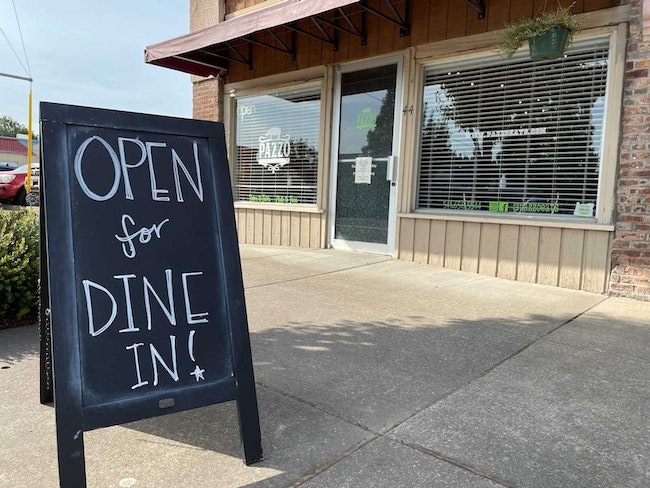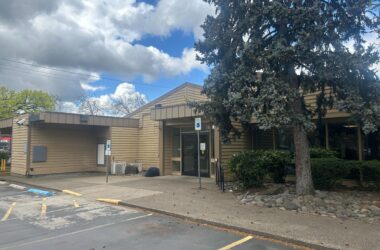
What do national truck driver scarcity, historic labor problems, and the Delta variant all have in common? They are conspiring to create supply-chain issues that are wreaking havoc among local and national restaurants.
The dining experience at a restaurant is very much like the proverbial tip of the iceberg. The food, service, and atmosphere are just a small part of the entire operation. The supply chain that gets your favorite menu items into the kitchen and onto your plate is an enormous and complex system that is typically unseen by customers.
Yet right now, that system is severely hampered by a host of factors, not the least of which are linked directly to the global pandemic.
Food needs to be harvested, packed, stored, shipped, and delivered, all of which takes many people working in demanding conditions. The shortage of workers in those roles is creating a huge challenge for the restaurant industry.
“The very root of the problem is COVID-19 related,” said Terry Hopkins, membership representative for the Oregon Restaurant and Lodging Association. “From staffing problems where restaurants can’t find enough wait staff, to big wholesalers who can’t find truck drivers, to a lack of warehouse employees, the pandemic has really hurt the industry’s ability to get products onto customers’ plates.”
Hopkins points out that supply-chain issues are butting up against pent-up consumer demand. “People have been waiting months and months to go out to eat. With what seemed like the likely end of the pandemic in July, many customers have begun venturing out to eat in huge numbers,” he said. “It’s great for the industry that demand is up, but there are going to be problems in the short term until the supply issues get sorted out.”
Indicative of the problem, Sysco Wholesale, one of the largest food distribution corporations in the world, recently announced on an earnings call that they are down around 15,000 employees since the pandemic began.
In Creswell, two business owners on the front lines of this crisis from the very beginning are pleading for patience from their customers.
“Have mercy on our souls, it’s not our fault!” exclaimed Jessica Landstra, owner of Farmlands Market Groceries and Custom Deli, when we spoke recently. She and her team have struggled mightily to source ingredients and supplies during the past 18 months, while trying to keep prices low enough for their customers to bear.
 Farmlands Market owner Jessica Landstra works to keep her shelves stocked in Creswell. Photo: Ron Hartman/The Chronicle
Farmlands Market owner Jessica Landstra works to keep her shelves stocked in Creswell. Photo: Ron Hartman/The Chronicle
“Basically, everything has gotten more expensive and harder to find,” she said. “And not just the major stuff like food. Paper products, like napkins, are becoming one of my biggest loss-leaders.”
Scott Pisani, chef and owner of Pazzo on Oregon Avenue, heartily agreed. “It wasn’t that long ago when I was paying about $16 to fill up my deep fryer with oil,” he said. “Now it costs me $62. Just recently I catered a private affair and my cost – just my cost – for four ribeye steaks was $72.”
Pisani also shares Landstra’s frustration over the cost of ancillary items. He mentioned that it is much cheaper for him to wash dishes from dine-in traffic than it is to purchase containers for people ordering take-out.
“The supply chain and labor shortage issues are made worse by the fundamental lack of understanding of our plight by the general public,” Pisani said. “Of course, it’s not their fault, they aren’t on the inside, but I would love for them to understand that our prices are based on math, not opinion, and our ability to serve their favorite menu items is contingent on vendors who are struggling to service thousands of clients.”
Landstra said she’s been waiting for four weeks for deliveries from her largest supplier due to supply-chain issues. “An operation my size is put on the back burner right now.”
Much of the problem for local restaurants can often be traced back to a special kind of distributor called a broadliner, which provides the vast majority of a restaurant’s inventory. These distributors operate in huge warehouses, and when an outbreak of COVID-19 hits, it can shut down their business. When that happens, their customers – the large and small restaurants they serve – are left scrambling to try to source their products elsewhere, or not at all.
This issue has a cascading effect throughout the industry. When a broadliner is impacted, inequities can occur as larger operations gobble up resources to the detriment of many smaller restaurants.
For Pisani, his business model of farm-to-table does provide a small lifeline in terms of sourcing products. “Because I use so many local suppliers, including local organic farmers and ranchers, I’m not quite as beholden to the big operators. I’m also lucky that I have a great local distributor in McDonald Wholesale of Eugene, which has really done a great job providing me with supplies.”
The final big problem for local restaurateurs is hiring workers for their own businesses. Both Pisani and Landstra pointed to the challenge to hire cooks, waitstaff, and other positions with the continuing fear of COVID-19. Even when they get the supplies they need, it has become increasingly difficult to serve their customers with the same level of service they grew accustomed to pre-pandemic.
Both Landstra and Pisani are hopeful that as the dining public learns more about these massive labor and supply-chain issues, they will become more understanding of price increases and modified menu choices at their favorite local restaurants.
“We love our business, and we love our customers,” Landstra said. “We just hope they will stick with us until Oregon and the world get back to normal.”







